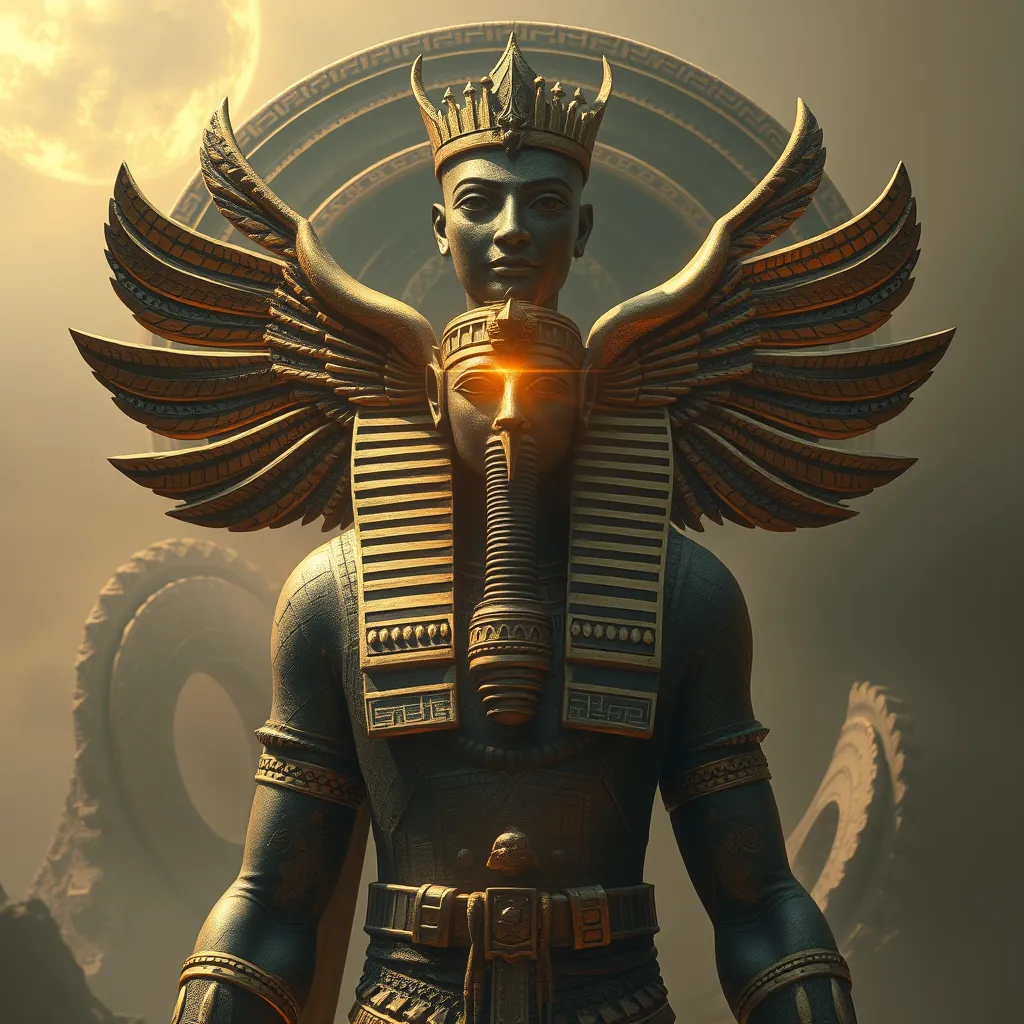The Duat: The Domain of Nephthys
I. Introduction to the Duat
The Duat, or the realm of the dead, is a significant aspect of ancient Egyptian mythology, representing a complex afterlife where the souls of the deceased journey after their earthly existence. It is a place filled with both peril and promise, embodying the Egyptians’ beliefs about death and resurrection.
In Egyptian culture, the afterlife was not merely an endpoint but a continuation of existence that involved a transformative journey. The Duat is central to these beliefs, serving as the domain where the soul must navigate challenges to achieve eternal life.
Among the deities associated with the Duat is Nephthys, a goddess often overlooked in favor of her more famous counterparts. She plays a pivotal role in guiding and protecting souls within this mystical realm, embodying the duality of life and death.
II. Nephthys: The Goddess of the Night
Nephthys, whose name translates to “Lady of the House,” is a goddess with a complex lineage, being the daughter of Geb (the Earth) and Nut (the Sky). She is the sister of Isis and the wife of Set, the god of chaos. This rich family background places her within significant mythological narratives, often intertwined with themes of mourning and protection.
The symbolism associated with Nephthys is profound. She is often depicted as a protective figure, embodying the aspects of the night, darkness, and mystery. Her attributes include:
- Protection of the deceased
- Association with funerary rites
- Symbol of mourning and loss
Nephthys represents a duality in her character—she is both a guardian of the dead and a figure of sorrow, reflecting the emotional complexities of death and the afterlife.
III. The Structure of the Duat
The Duat is portrayed as a vast and intricate landscape filled with various realms and challenges. It is often depicted as having multiple layers, each with its own geography and experiences for the souls navigating through it.
Key features of the Duat include:
- The Hall of Judgment, where souls are weighed against the feather of Ma’at.
- Fields of Iaru, a paradise for the worthy souls.
- The Lake of Fire, a place of punishment for the unworthy.
The journey through the Duat is significant as it symbolizes the trials one must face to achieve immortality and reunification with the divine. It reflects the belief in the necessity of overcoming obstacles to reach eternal life.
IV. Nephthys’ Role in the Afterlife
Nephthys serves a crucial function in the afterlife as a guide and protector of souls. She assists the deceased in their journey through the Duat, ensuring their safe passage and offering comfort in times of uncertainty.
Her relationship with other deities in the Duat is also noteworthy. She often collaborates with:
- Isis, her sister, who is also a protector of the dead.
- Osiris, the god of the afterlife, to whom she is closely linked.
- Thoth, who provides wisdom and guidance during the judgment process.
The rituals and practices associated with Nephthys often involve funerary rites, where her protective qualities are invoked to assist the deceased in their journey to the afterlife.
V. Myths and Legends Involving Nephthys
Nephthys is prominently featured in various myths, particularly those surrounding the Osiris myth. In the tale, she plays a vital role in mourning Osiris and aiding Isis in her quest to resurrect him. This story highlights her importance as a figure of compassion and support.
Other legends depict Nephthys interacting with various gods and goddesses, showcasing her multifaceted nature. These myths contribute to the understanding of the Duat by illustrating the interconnectedness of deities and their roles in the afterlife.
VI. Symbolism and Iconography of Nephthys
The symbolism associated with Nephthys is rich and varied, often depicted in ancient Egyptian iconography. Common symbols include:
- The basket and the flax, representing the domestic sphere.
- The wings of a bird, signifying protection and shelter.
- The hieroglyph of her name, often shown with a house and a basket.
Artistic representations of Nephthys can be found in various artifacts, including tomb paintings and sculptures. Over time, her imagery has evolved, reflecting shifts in religious practices and beliefs within ancient Egyptian culture.
VII. The Duat in Modern Interpretation
The Duat and Nephthys continue to influence contemporary literature and art. Many modern interpretations explore themes of mortality, the afterlife, and the symbolic meanings of Nephthys as a figure of protection and sorrow.
Additionally, Nephthys has found a place in modern spiritual practices, where she is invoked for guidance and comfort in times of loss. This resurgence of interest in ancient Egyptian mythology speaks to the enduring legacy of these beliefs.
VIII. Conclusion
In summary, Nephthys holds a significant place within the Duat, embodying the dual roles of protector and mourner. Her contributions to the afterlife narratives in ancient Egyptian mythology highlight the complexities of death and the journey that follows.
The Duat remains a crucial component in understanding ancient Egyptian beliefs about life, death, and the afterlife. The exploration of these mythological narratives not only preserves cultural heritage but also enriches our understanding of human experiences across time.
Ultimately, the stories and symbols associated with Nephthys and the Duat remind us of the profound connections between life, death, and the enduring quest for immortality.




